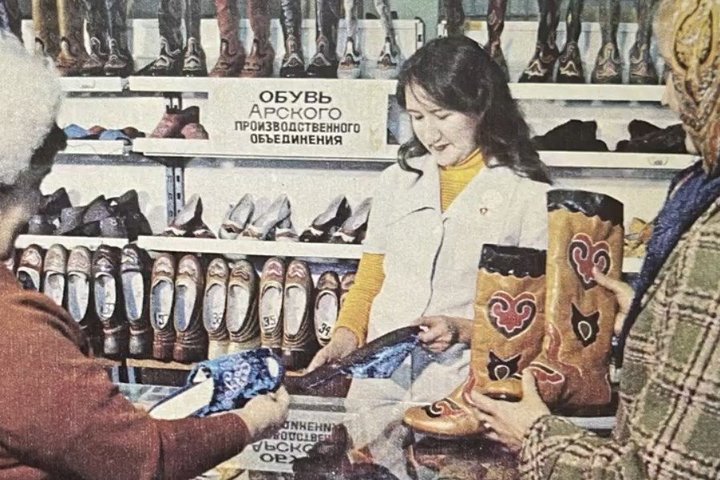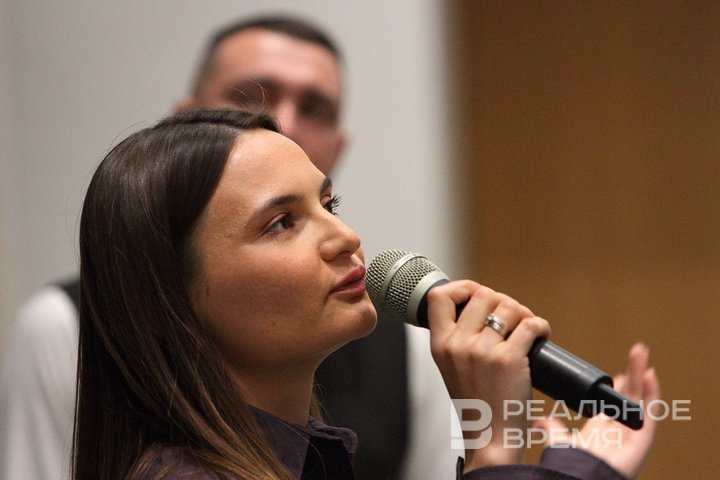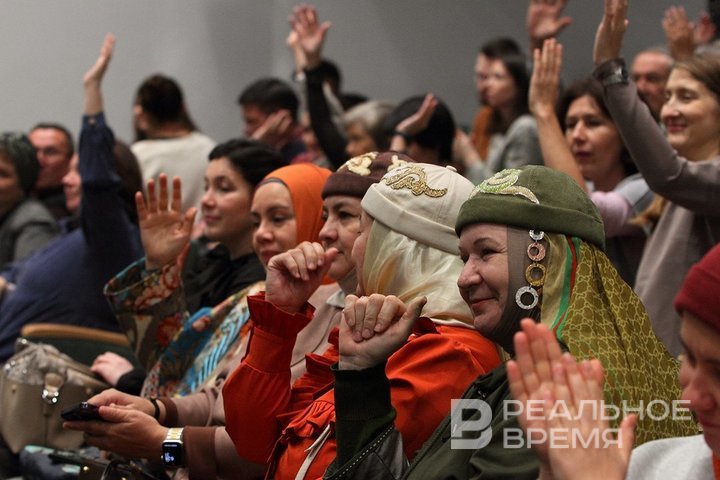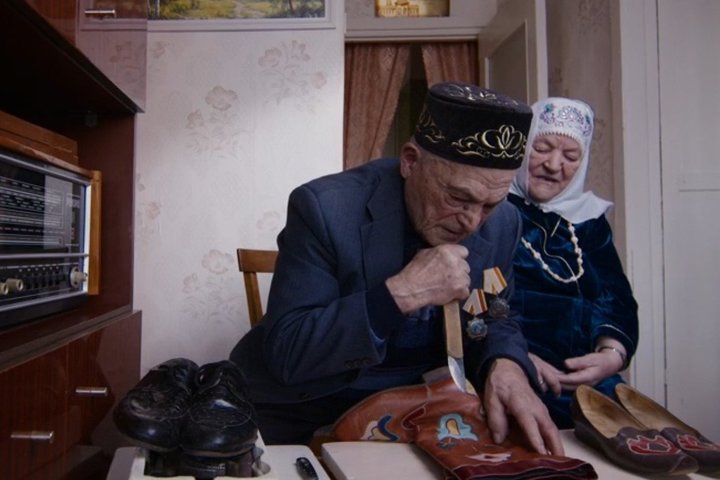‘Kazan Stich’ shown to Tatarstan: film about Arsk factory reaches capital

After premieres in Nizhnekamsk and Yelabuga, the film “Kazan Stitch” reached Kazan. The film's creators talk about the famous Arsk Shoe Factory and its technology, which was recognised as an intangible cultural heritage site in the republic in 2022. Former employees of the enterprise also starred in the film. The film was presented to the audience at the National Library of the Republic of Tatarstan.
Glory to manual labour
The film was released on 27 October in Nizhnekamsk. Then there was a screening in Yelabuga, then in Almetyevsk, Arsk, Leninogorsk, Naberezhnye Chelny. Many of them are accompanied by discussions and a master class on the technology of creating leather mosaics and Kazan seams. The film's partner is Elina Safarova's ES Gallery Studio, and the screenings were supported by the Institute for Urban Development of the Republic of Tatarstan.
Bay Khayrullin is the film's director. In 2022, he presented the film Bilyar. Heritage Storeroom about the history of the ancient city, which he shot at his own expense. He also has a short feature film Let’s Go Out made using a neural network.
“I want as many people as possible to learn about this ancient craft,” says producer Mira Rakhmat, designer, head of qul eşe school and bureau of Tatar crafts.
But it will not appear on the screen right away. The film starts as if from the middle, with a series of montage cuts and memories. It begins with the Gilyaziyevs couple — Anas and Sufiya. Both have worked in the manual production of shoes almost throughout their life. Rakhmat's story of making films began with her acquaintance with them and her love for them.

A significant part of the speakers are from the Arsk factory, as well as from its branch in the village of Mulma. On the other hand, there are many museum workers, researchers, modern masters and collectors. Guzel Valeyeva-Suleymanova is the film's scientific consultant.
The first 15 minutes of the film are spent enticing the viewer by telling him that the boots came to the territory of modern Tatarstan with Islam. They mention pig bristles, which were used in sewing, and which hunters used to go into the forest for. They show sneakers with the addition of mosaics, which were also sold as arts and crafts.
The entire process of making shoes was manual. The film even shows a letter from 1985 to Vice Minister of Local Industry of the Tatar ASSR Kirzhemanov: “We consider the mechanisation of the Tatar traditional method of hand embroidery on leather to be inappropriate and harmful, ruining the wonderful art of the Tatar people.” The production volume is indicated — 750,000 pairs per year. And Lenar Gubaydullin, head of the regional history sector of the Backyard Kazan Museum, says that they tried to achieve automation with the help of specialists from Japan, but nothing came of it.

Worker Farida Karimullina recalls that the norm was initially 80 pairs of soft leather shoes, for which she was given 100 rubles. Director of the factory in 1979-1999 Ildus Gaynutdinov points out that in the end production volumes increased to 1.3 million items per year. Finally, in the film you can see how modern master Guzel Bilaletdinova demonstrates the technique of the Kazan stitch: a loom, a spindle, an awl, floss and waxed thread. The stitch, in which the thread wraps around the needle three times, is incredibly strong. The leather of old boots can rot, but the stitch can handle it.

What the Arsk area was famous for
The Arskfactory had been filmed before, but in the more prosperous Soviet years: the film cites fragments from the almanacs On the Wide Volga and Soviet Tatarstan. There was also a separate film Amazing Shoes. But this film is certainly imbued with sadness and discoveries.
The spectatpr sees Tatar footwear in the paintings of Russian classics. Even Tsar Ivan the Terrible in Vasnetsov's painting wears Asian boots. He learns that only after the revolution the Tatars began to switch to European shoes, but exports saved the situation, since boots with mosaics were in demand abroad.
Workers' cooperatives began to appear in Kazan and the republic. In 1961, the Arsk and Dubyaz art factories began to operate, which in 1972 merged into the Arsk National Footwear Production Association. There were branches in the villages.
When the factory settled in Arsk, people from the villages began to get jobs there en masse, and these were representatives of dynasties who studied each other. Since the 1960s, national mosaics have been used in the design of public spaces, for example, for the Kamal Theater.

How the 1990s ended traditions
In 1992, says Ildus Gaynutdinov, a market economy came to the country, and due to this, Chinese shoes, which cost three times less than local ones. In Arsk, they looked for other ways to preserve production — they produced skullcaps and accessories. Men's boots were already made without patterns.
In 2006, the factory closed. The building on 5 Mostovaya Street was given a third floor and turned into a residential building. In its heyday, 1,300 people worked here, in 2005 — 180 did.
At the very end, we see Director Bay Khayrullin, a native of the Arsk region, who launched a shoe brand himself while filming this movie. There is an interesting part: after talking about one stitch, the authors briefly mention other techniques (chain stitch, forged, gimp). The future of traditions is unclear, although leather mosaic is studied in detail at the Feshin School. There are modern craftsmen and collectors hunt for boots. Times have simply changed — and manual labour is no longer as highly esteemed as before.